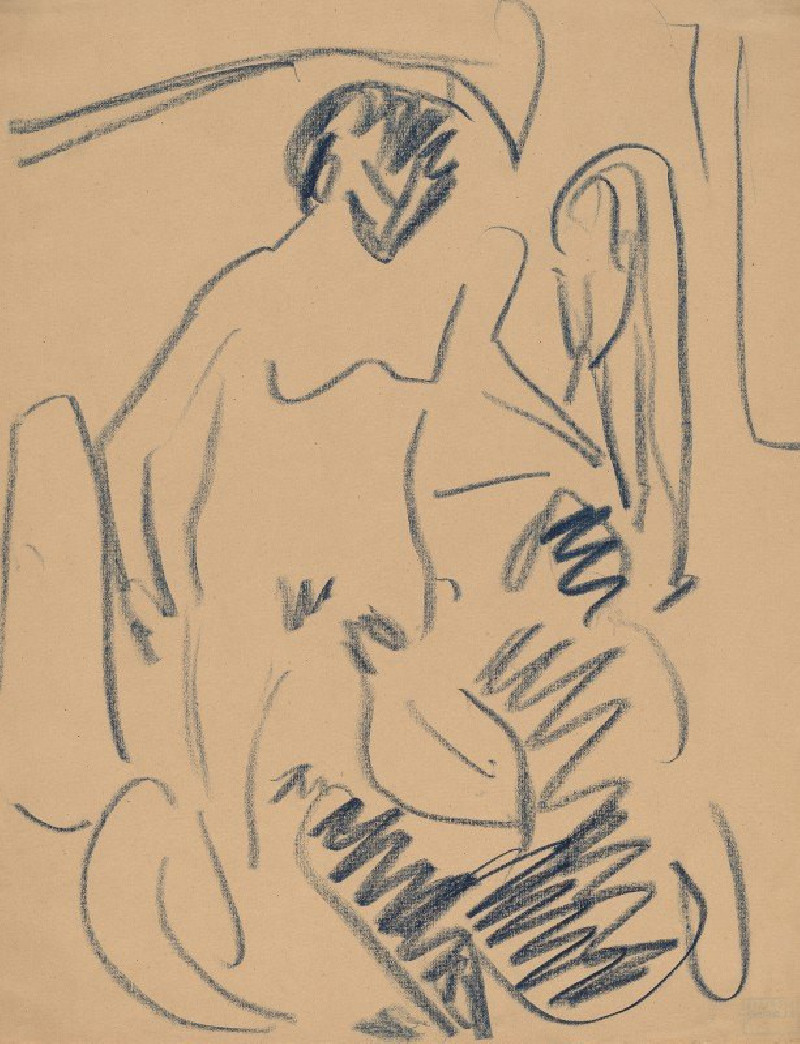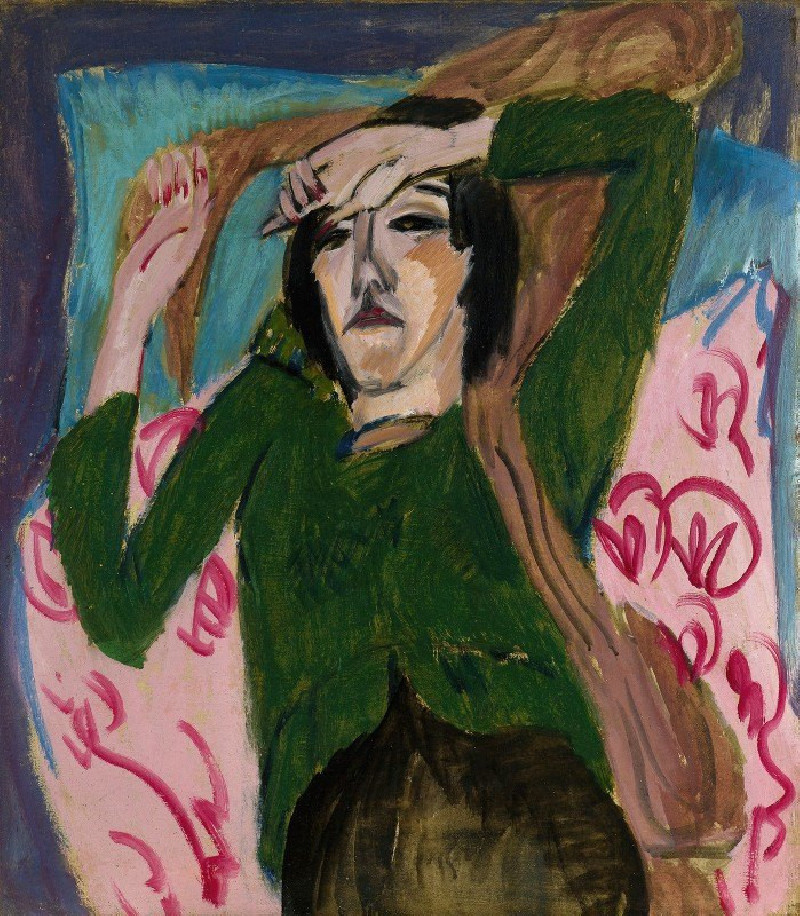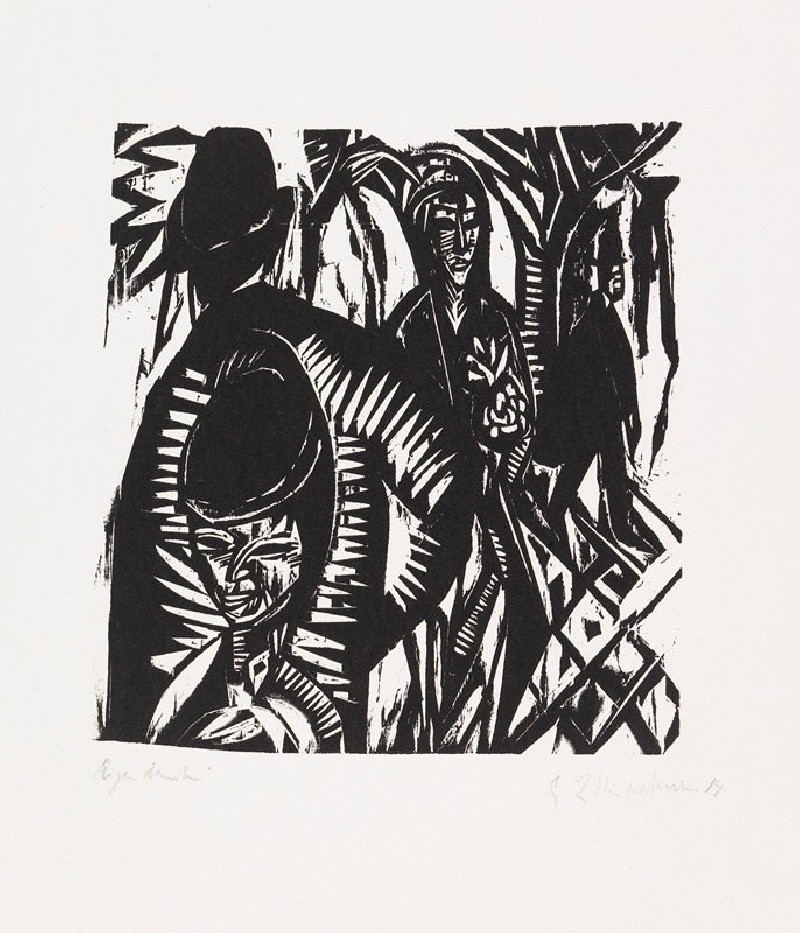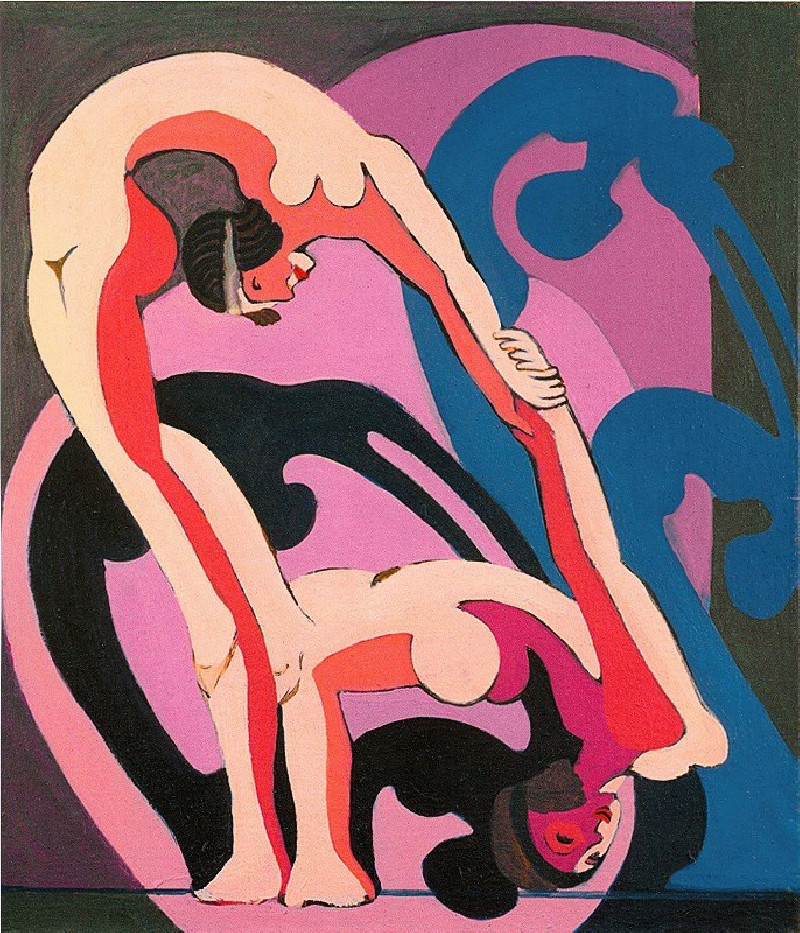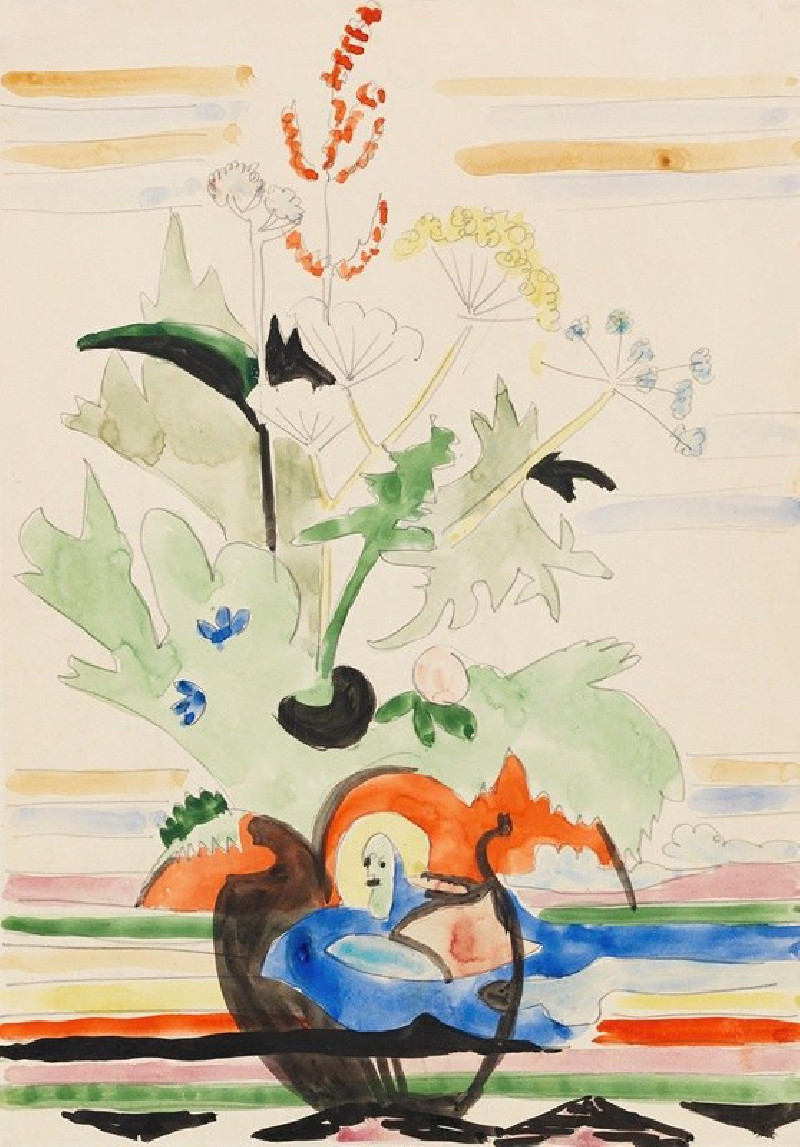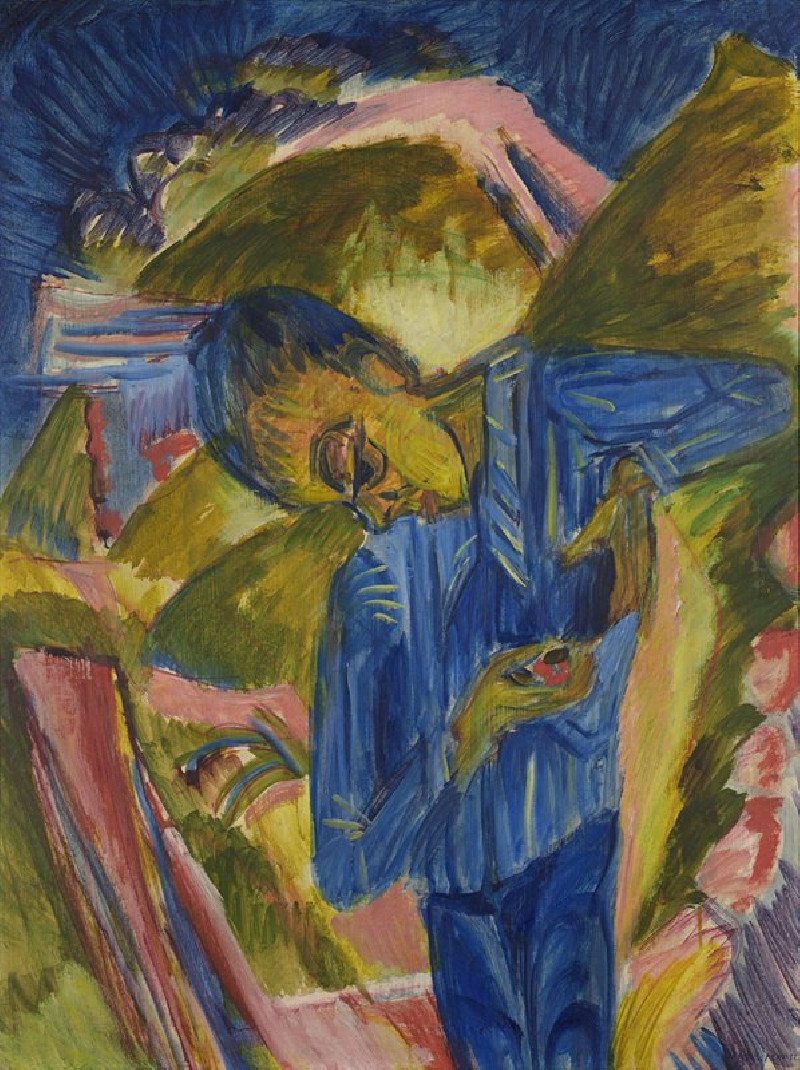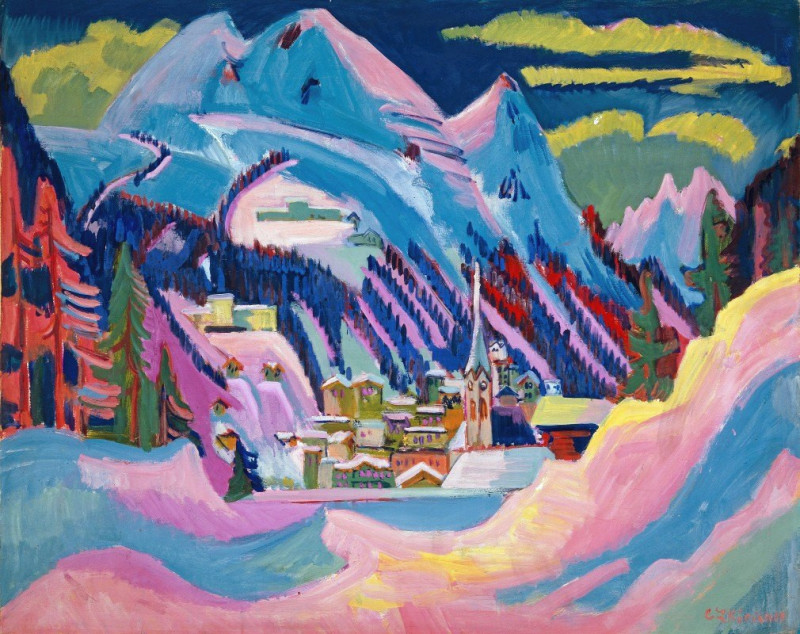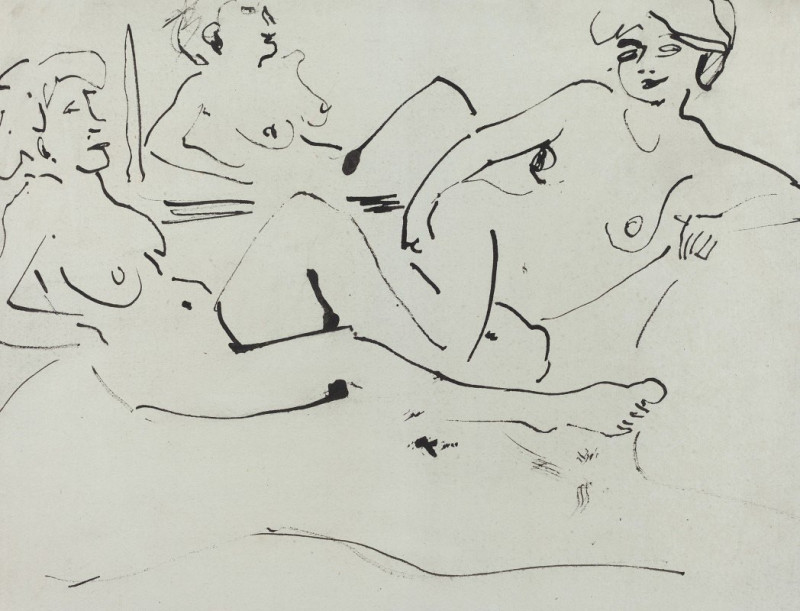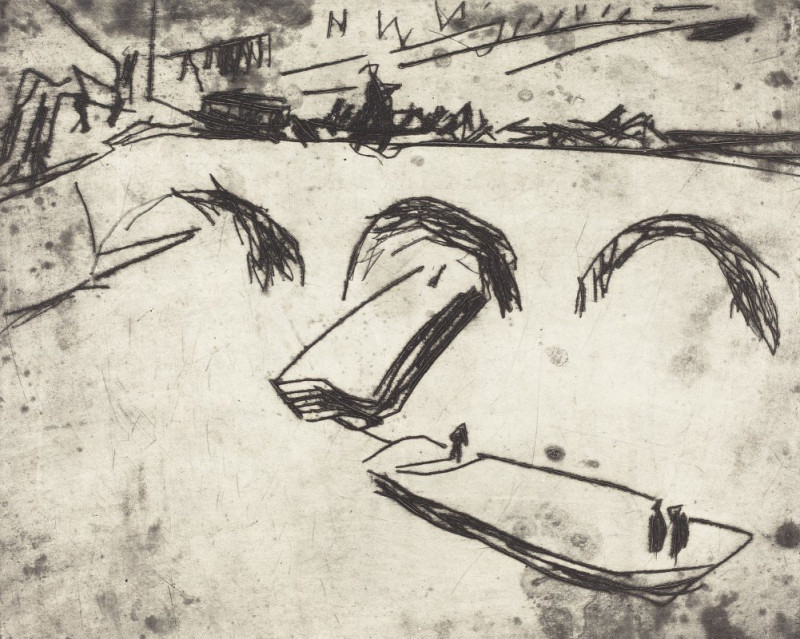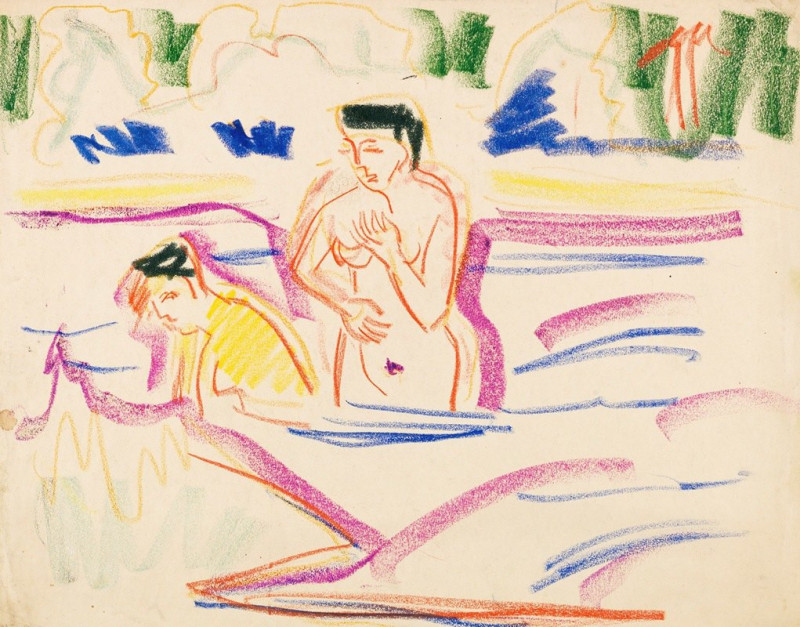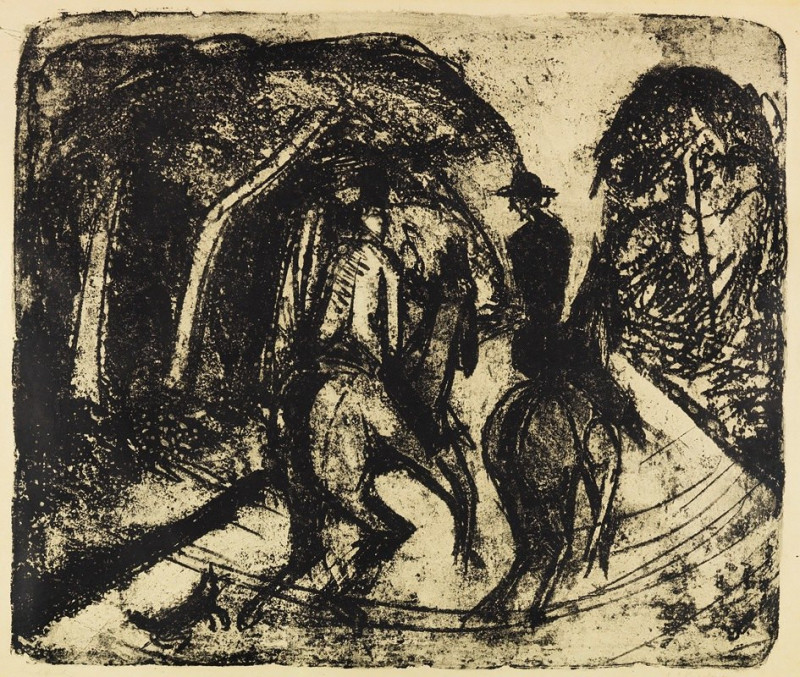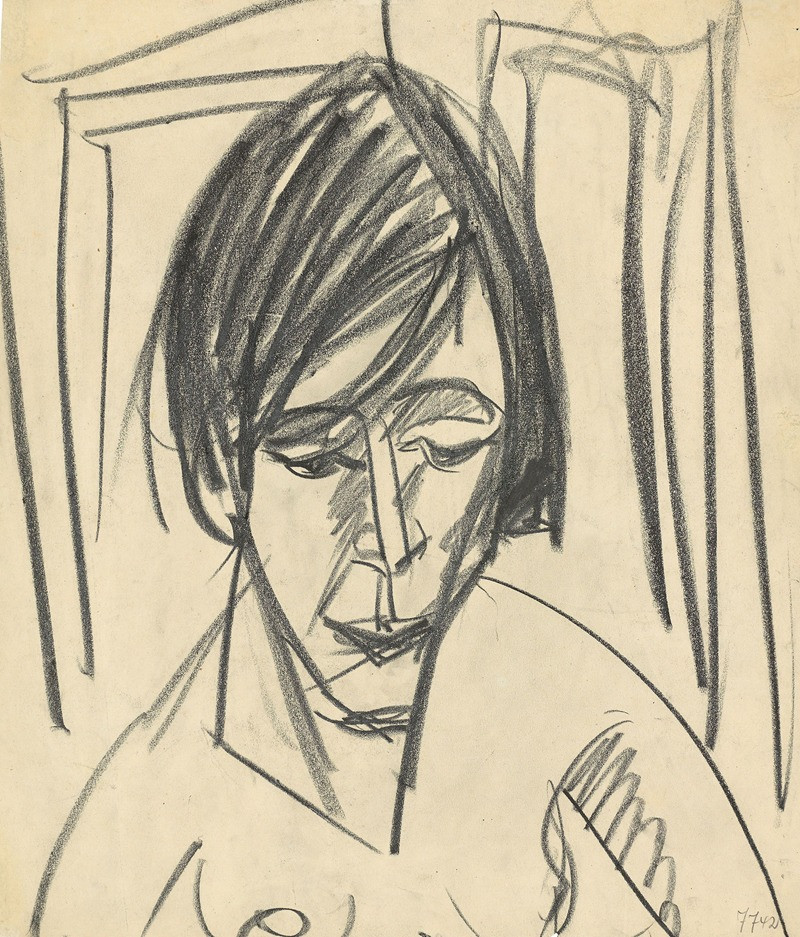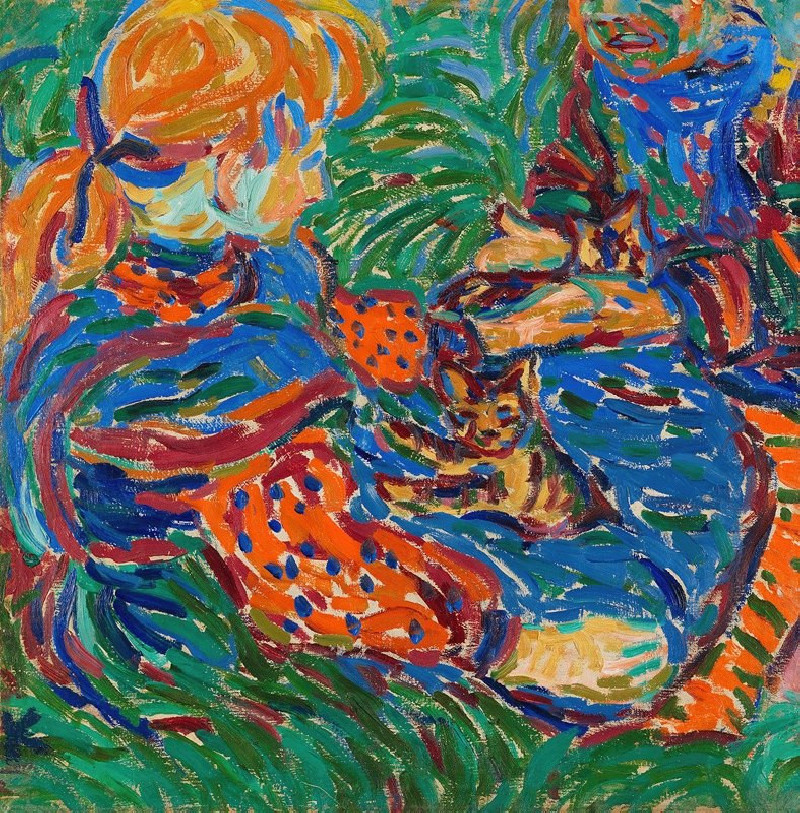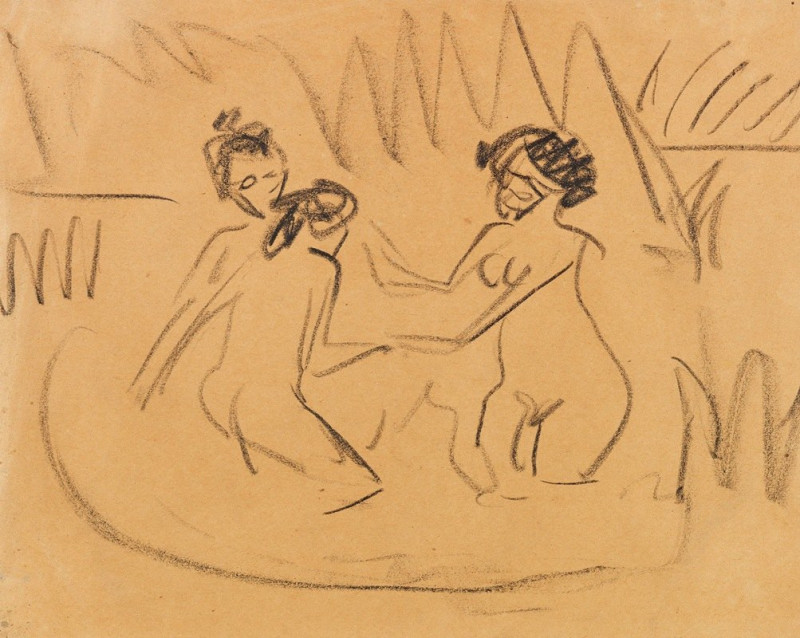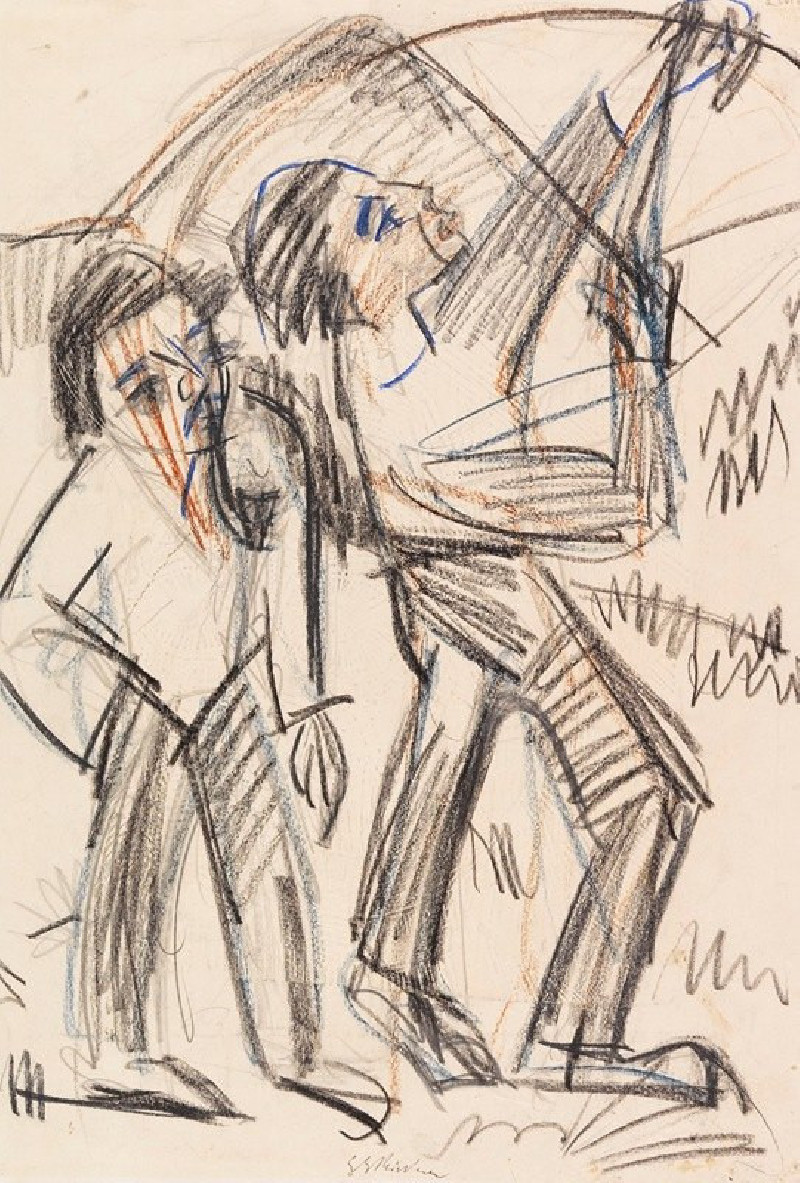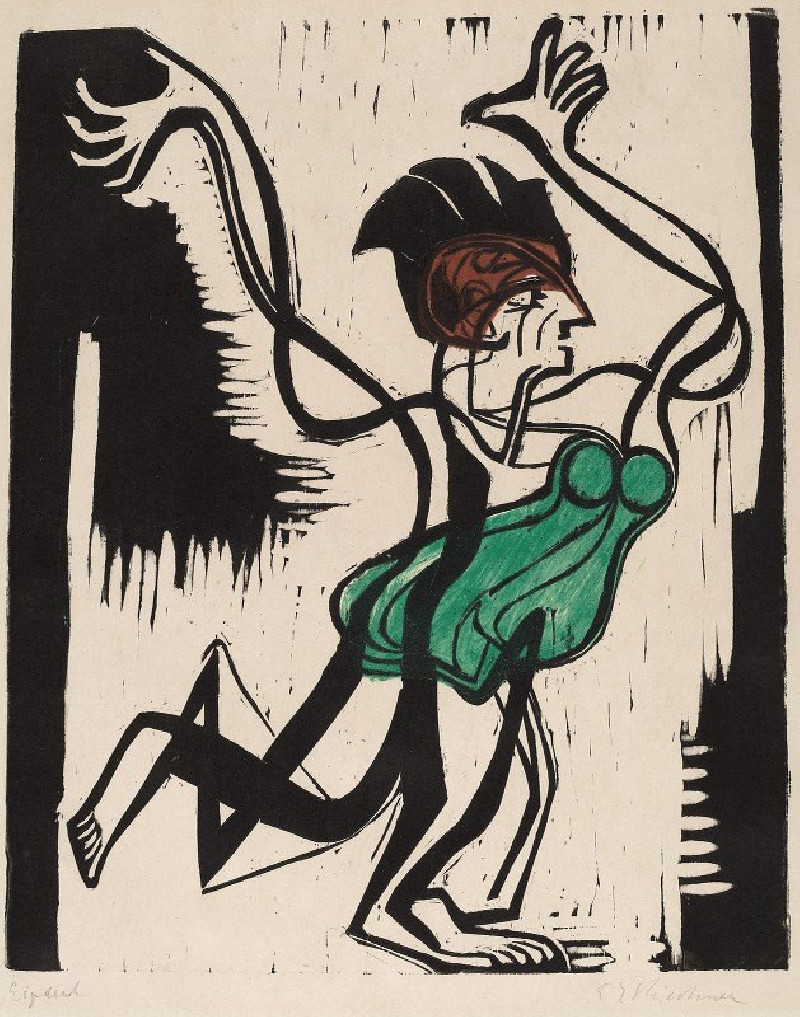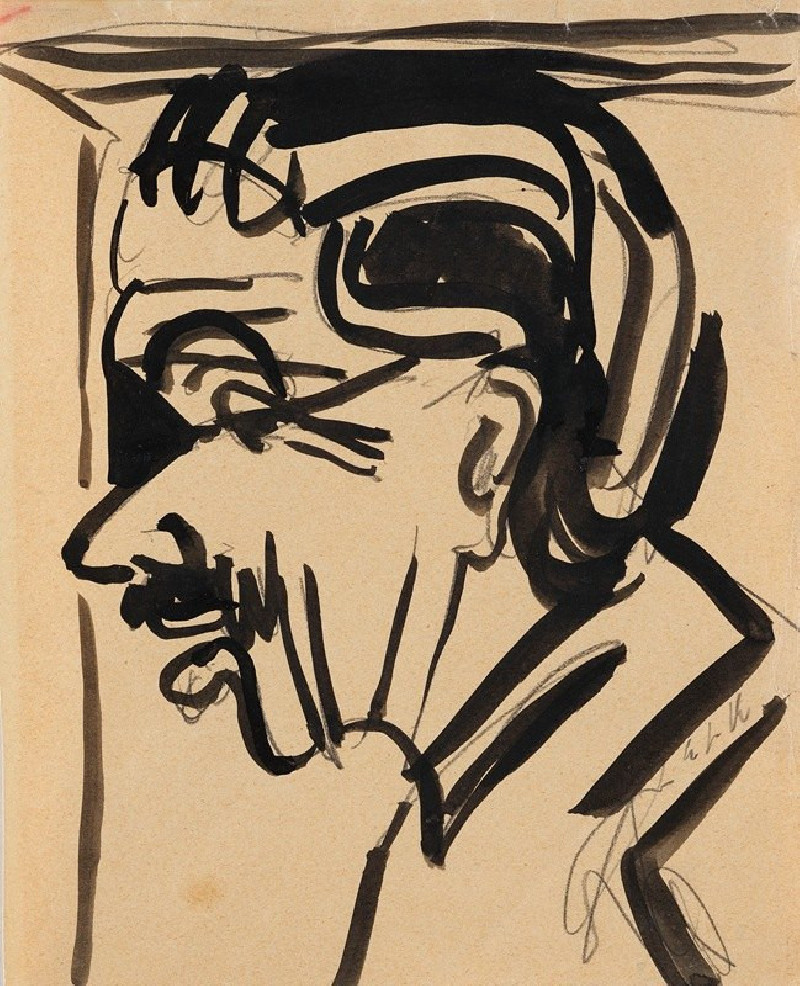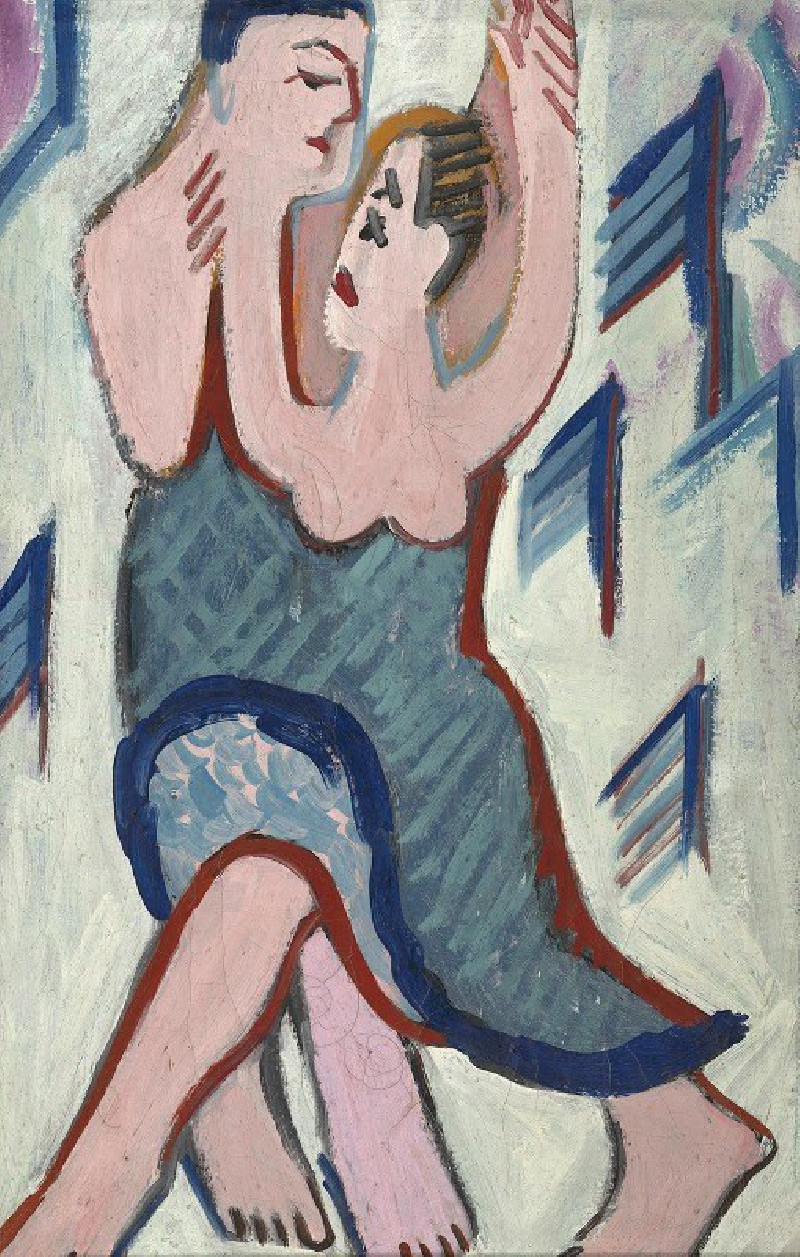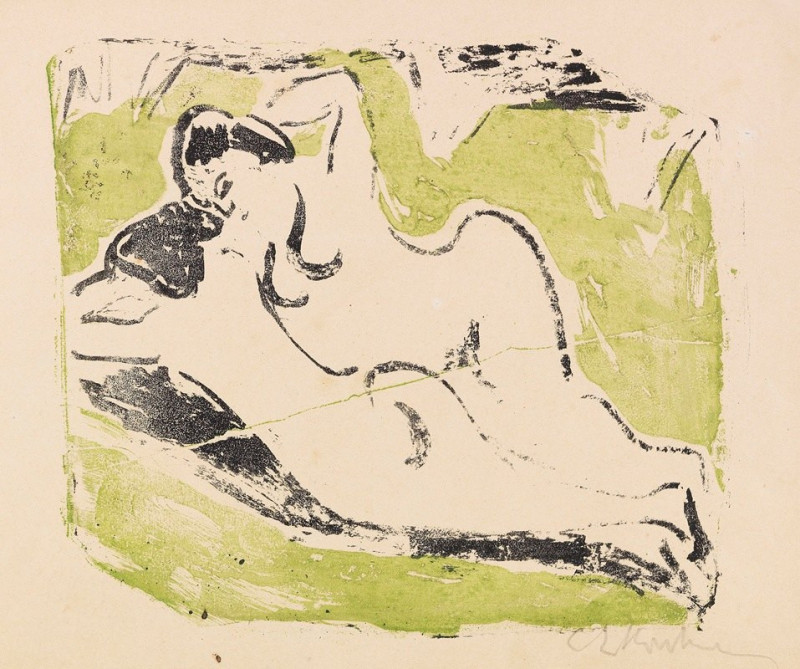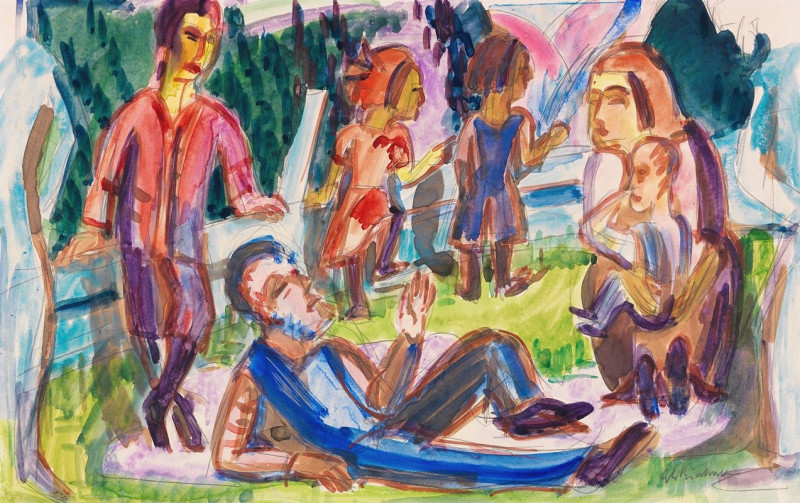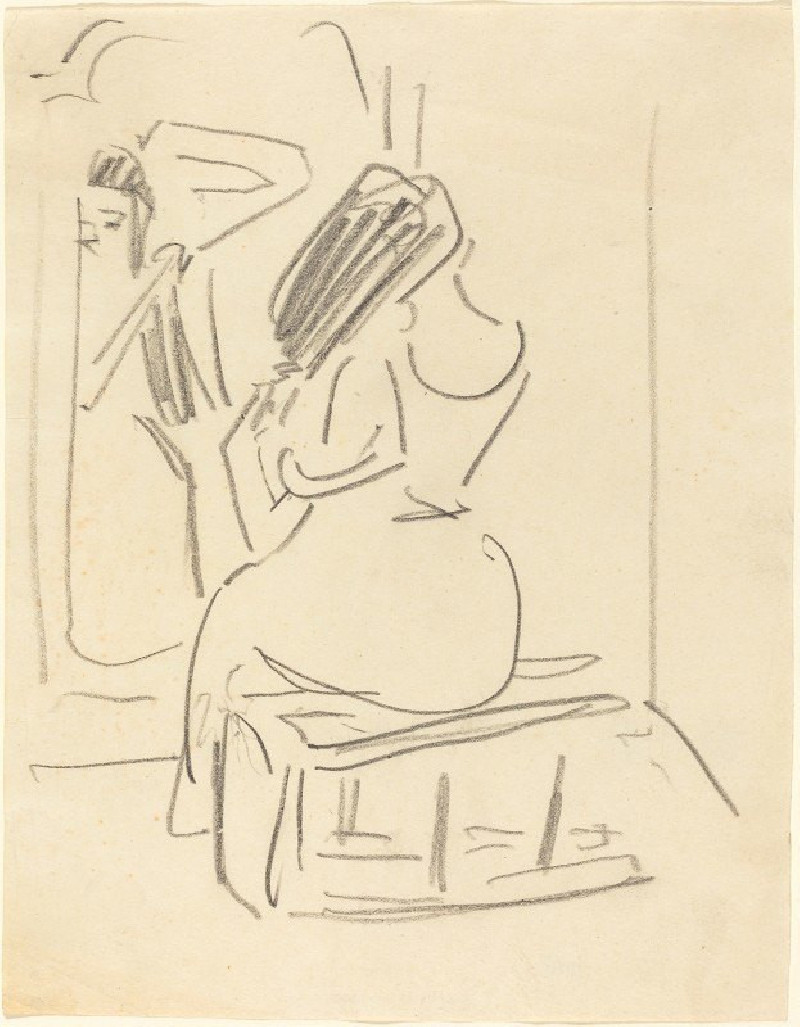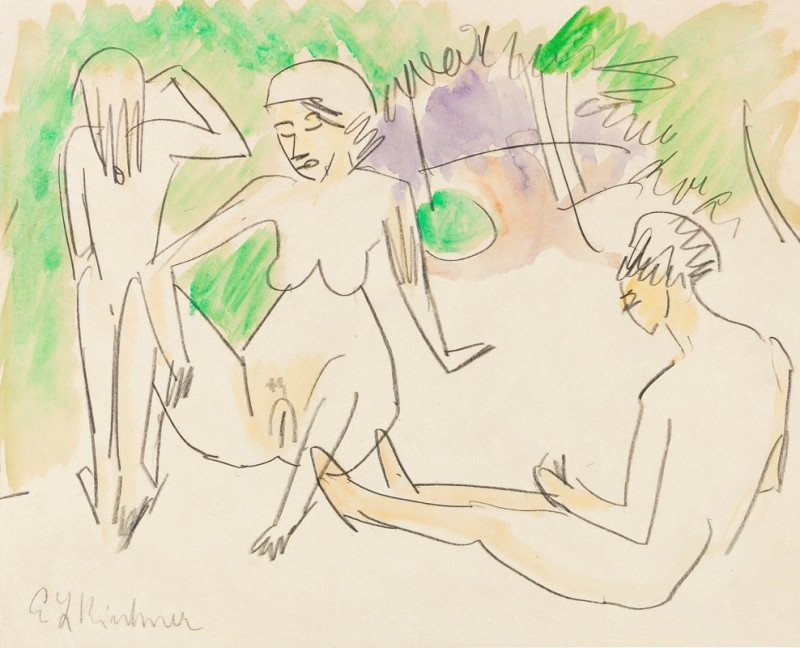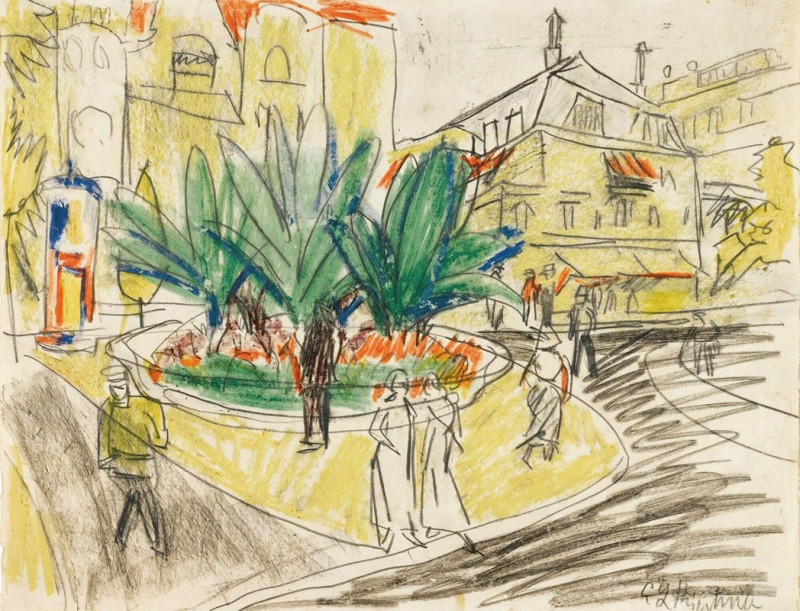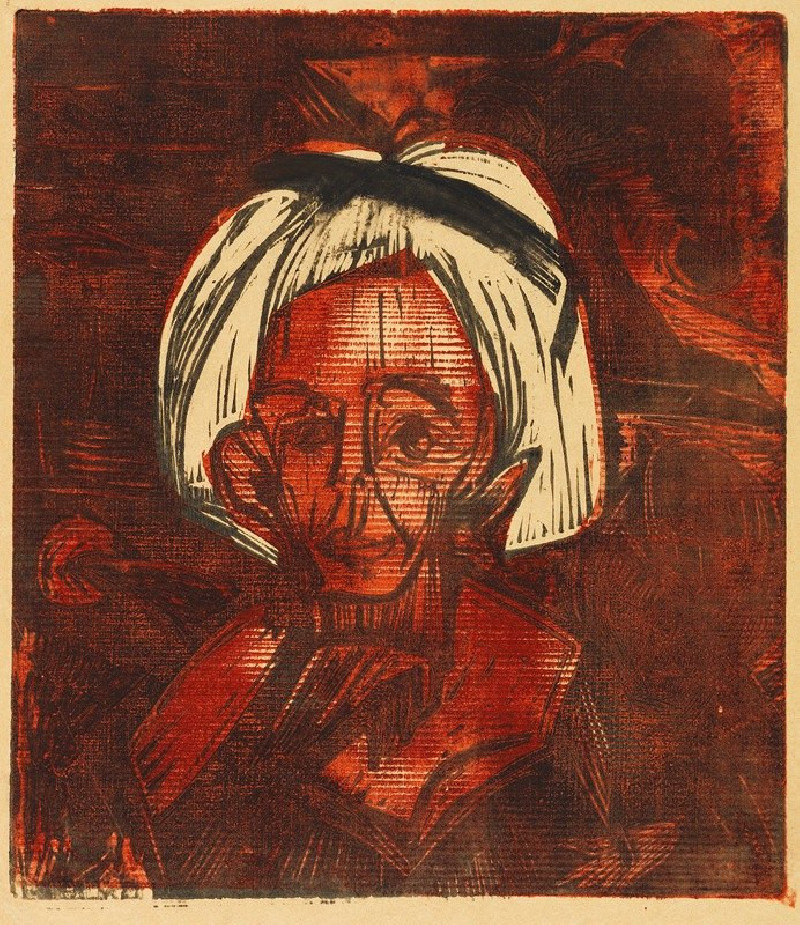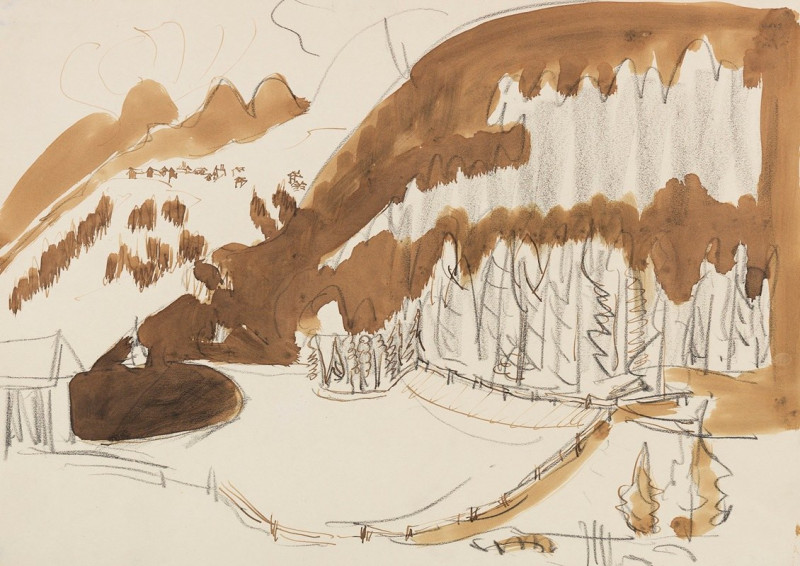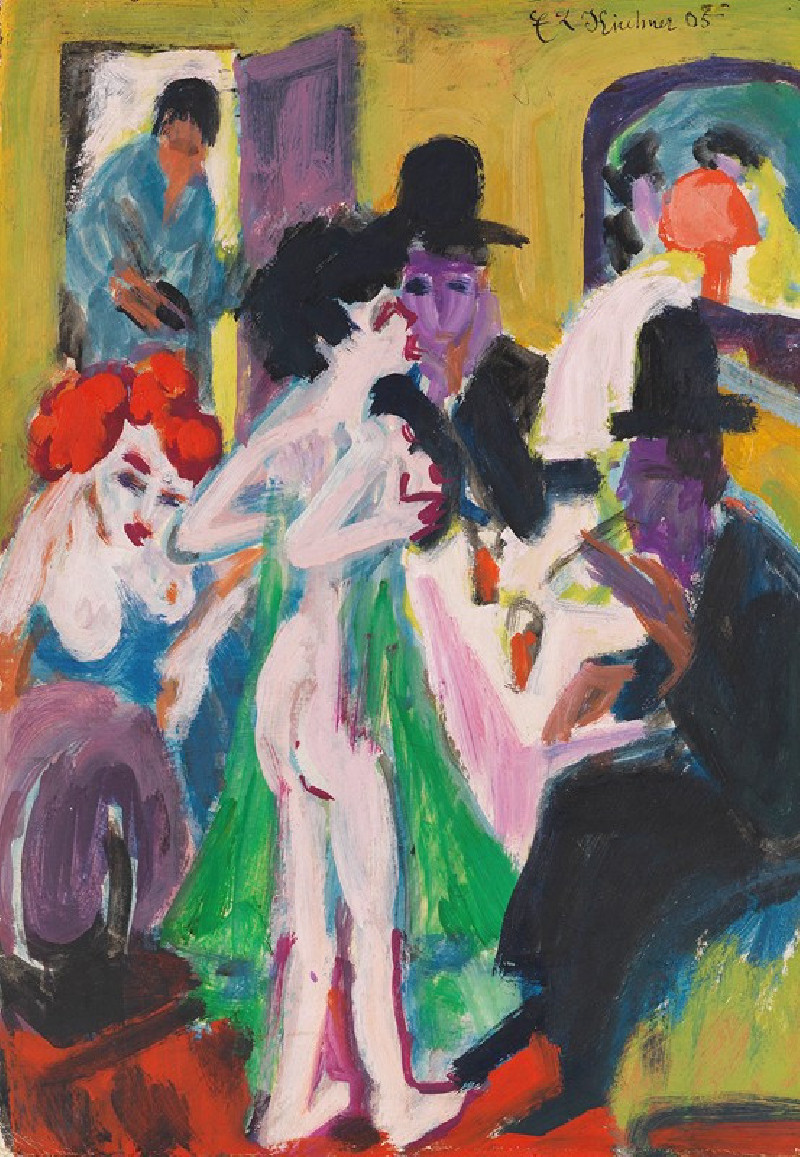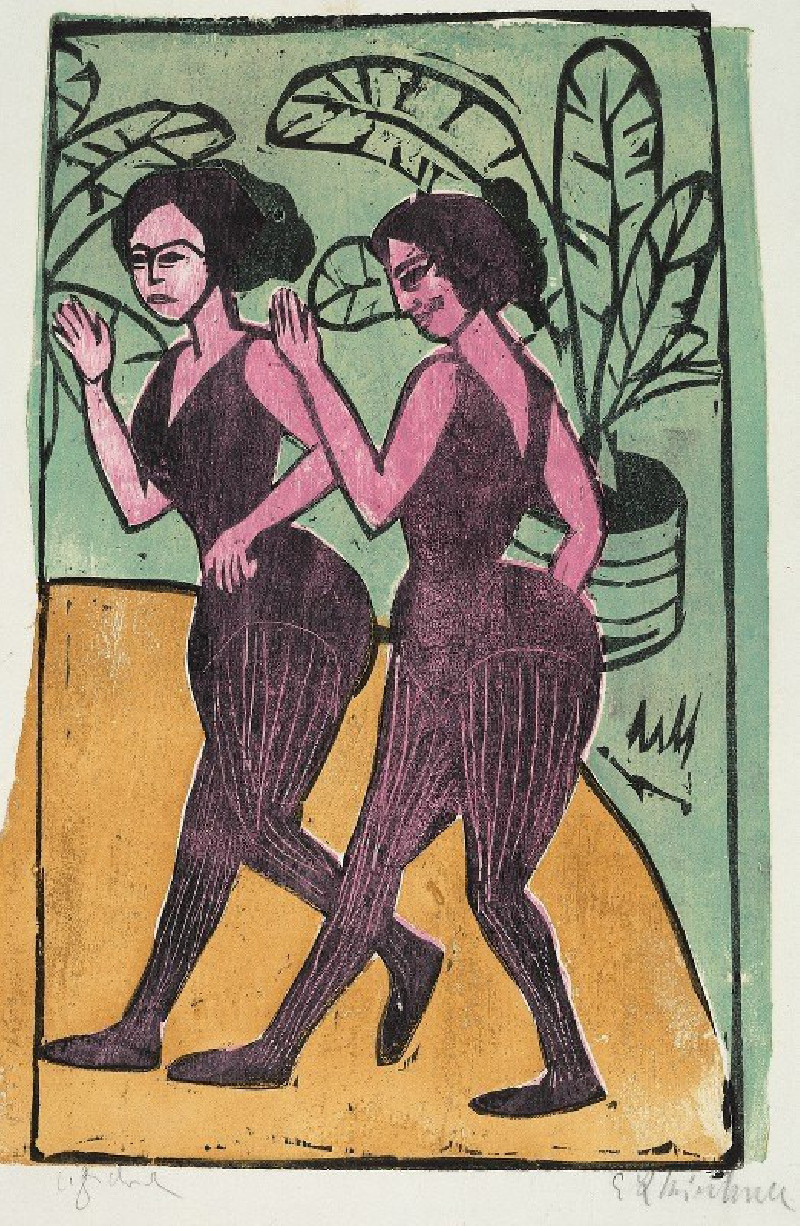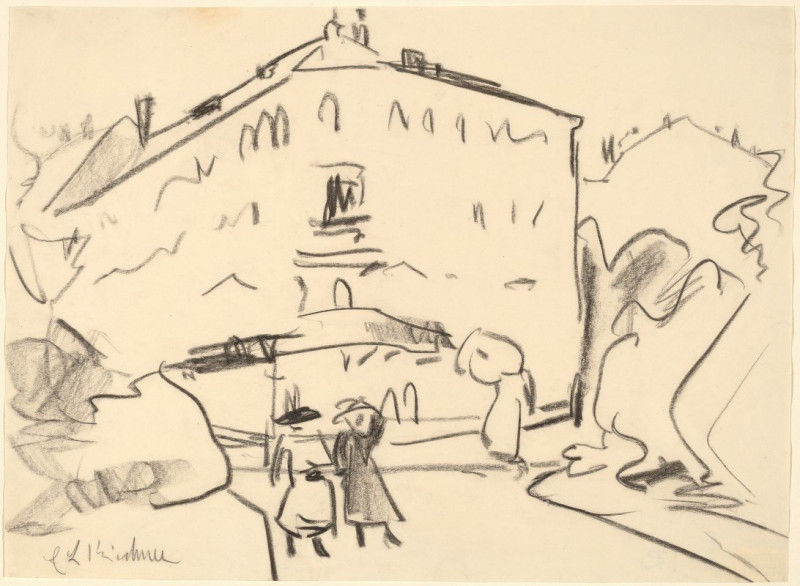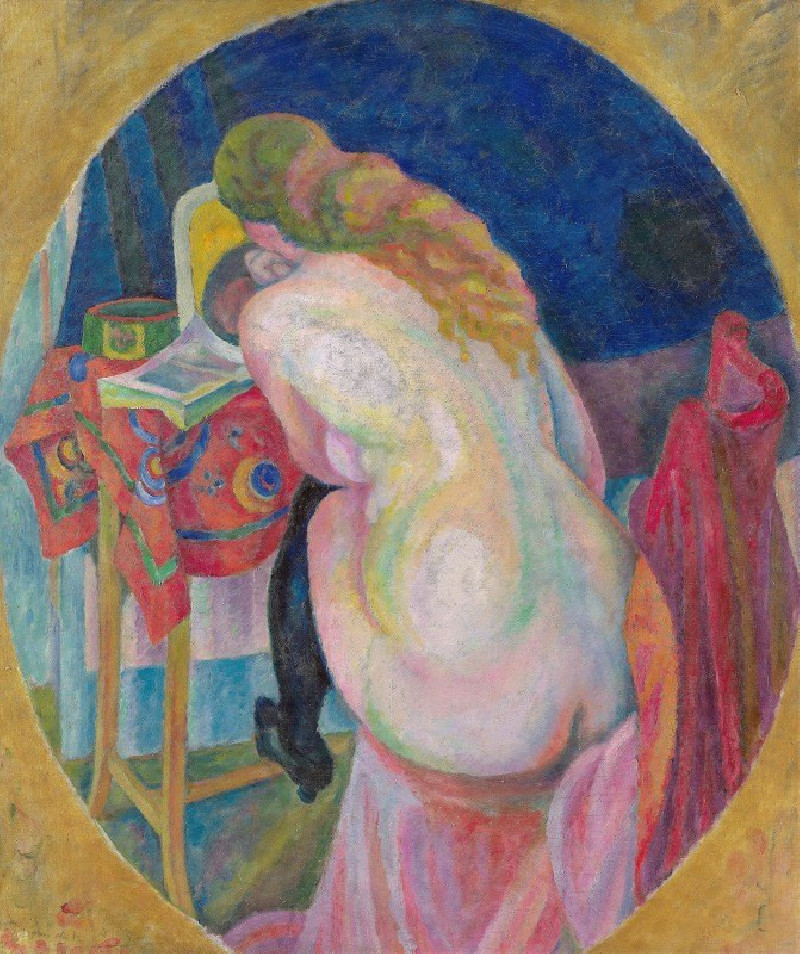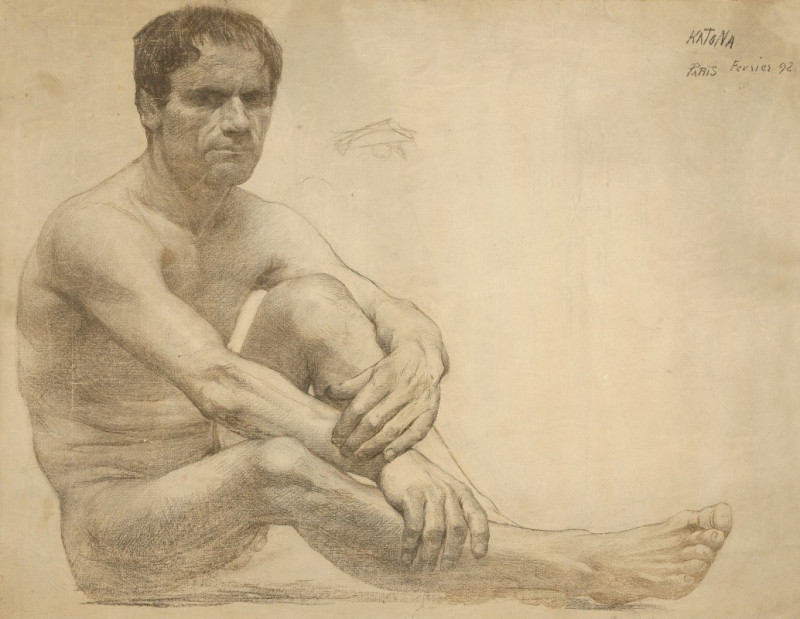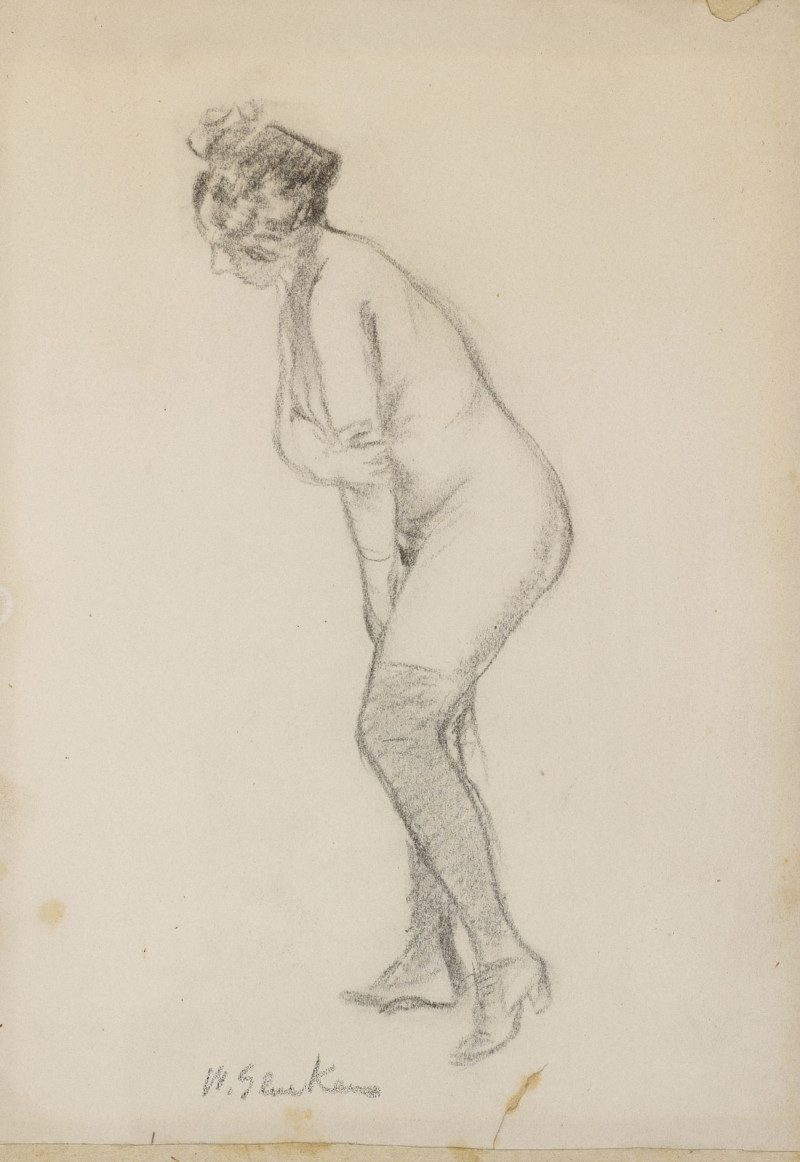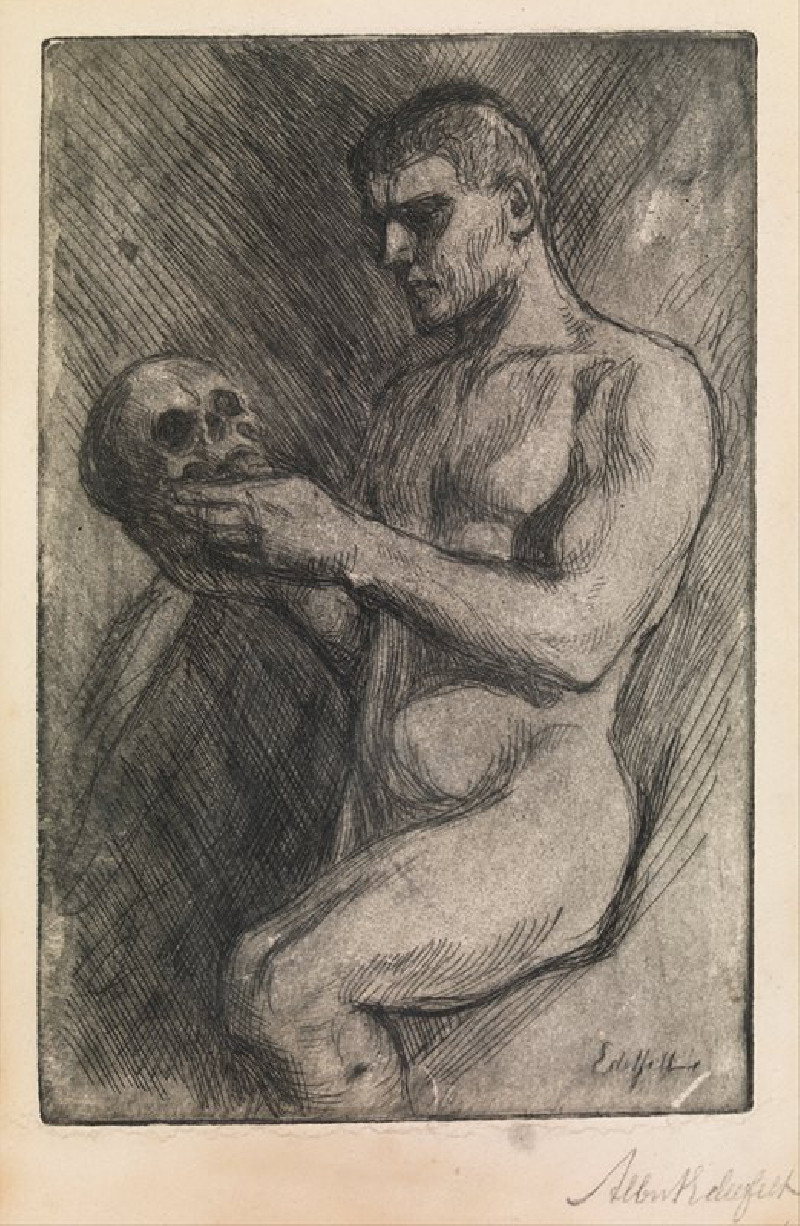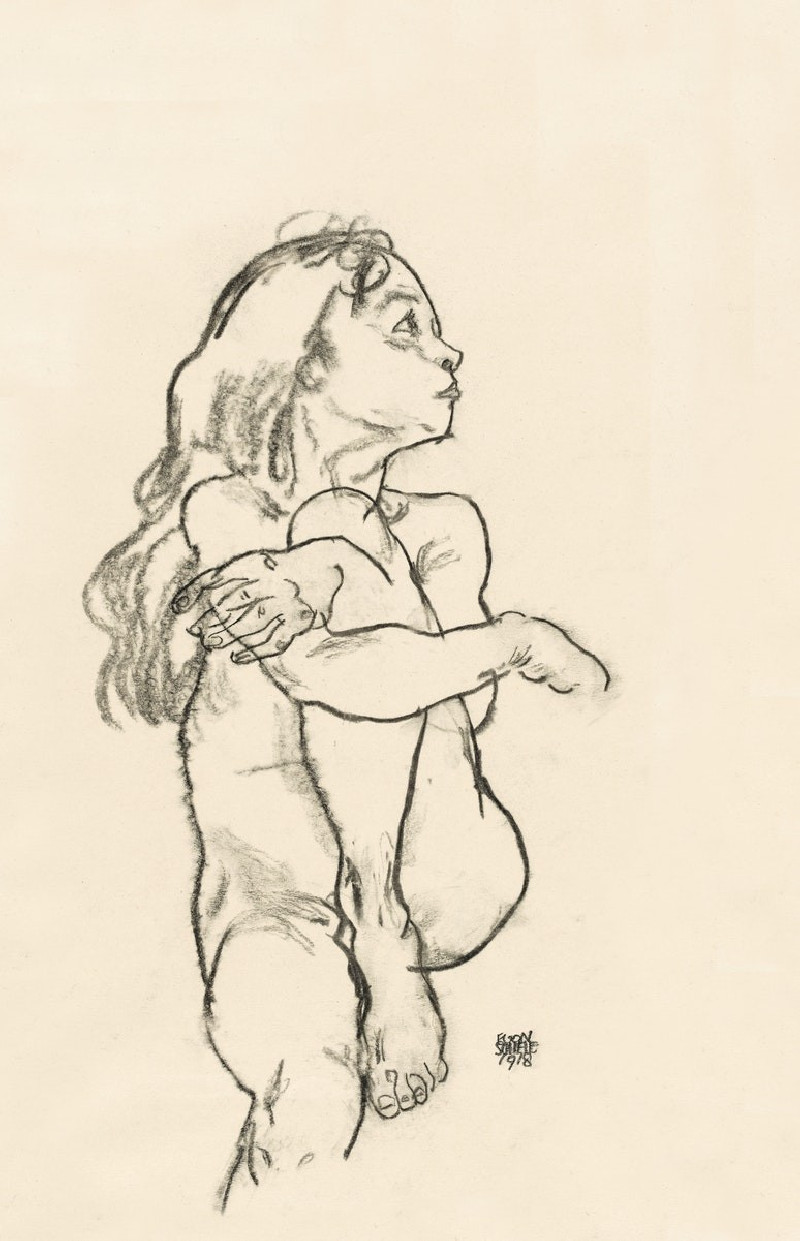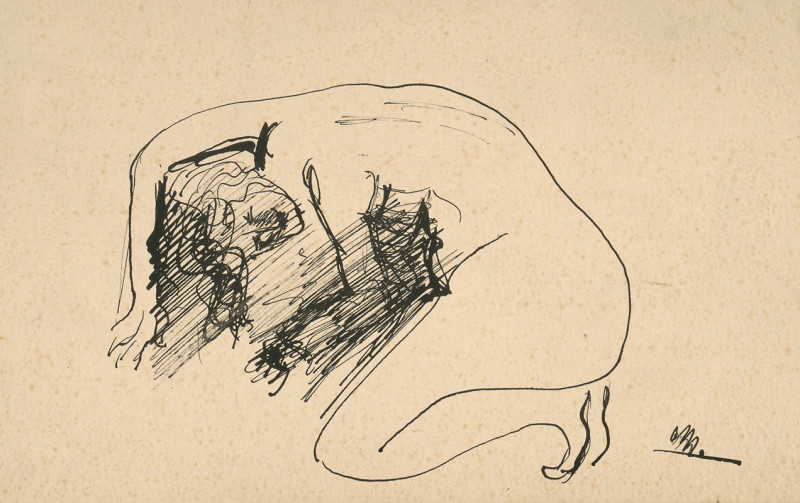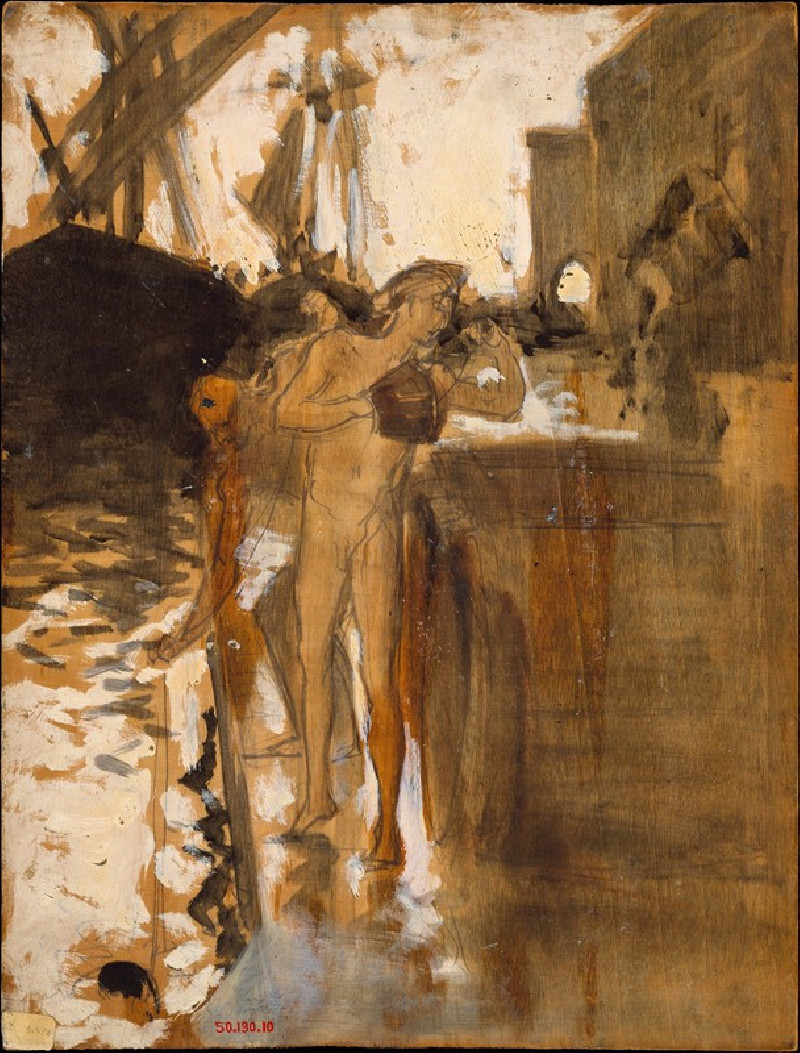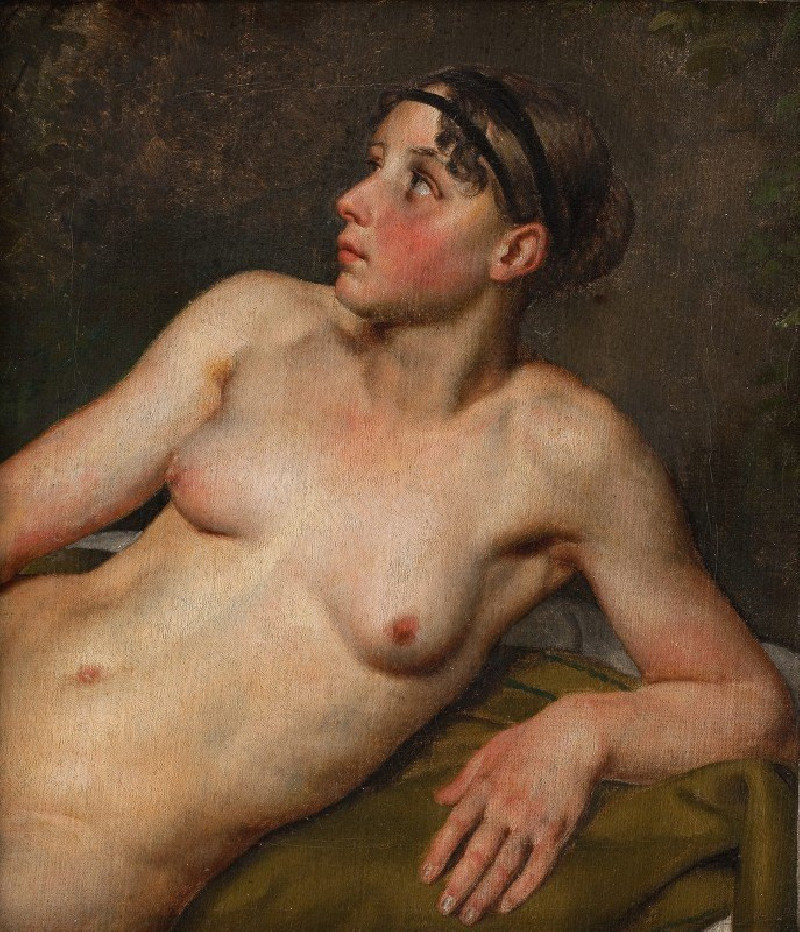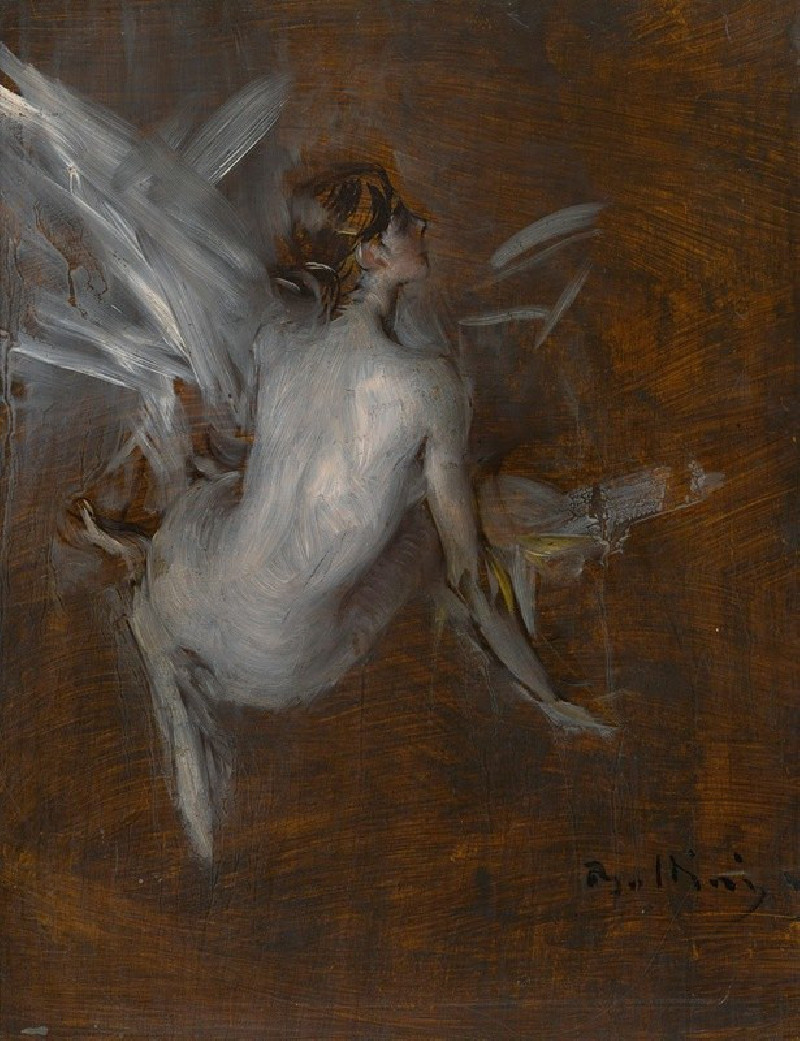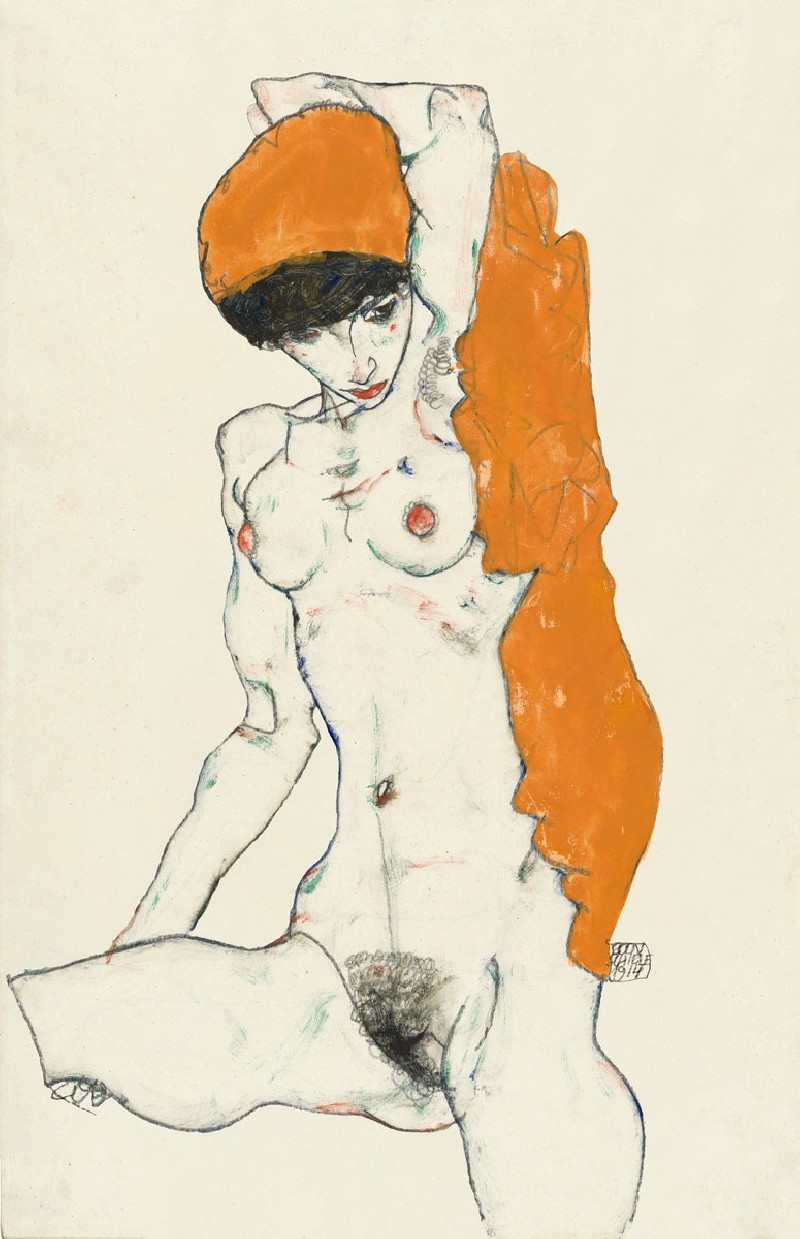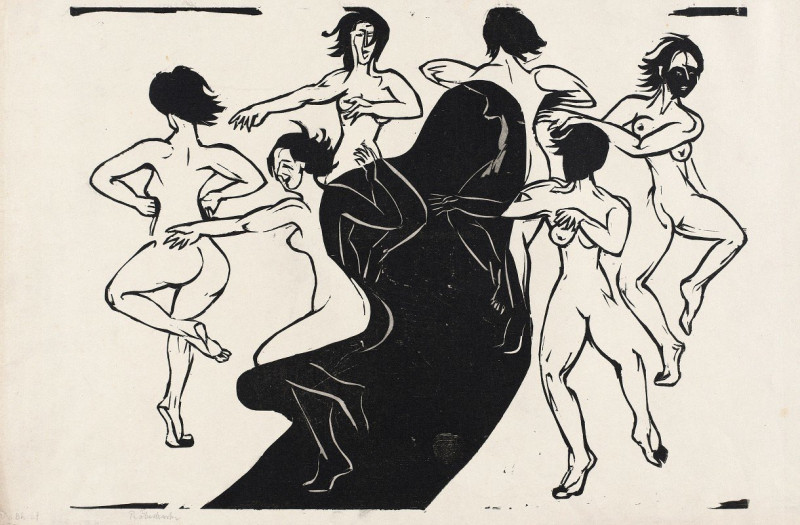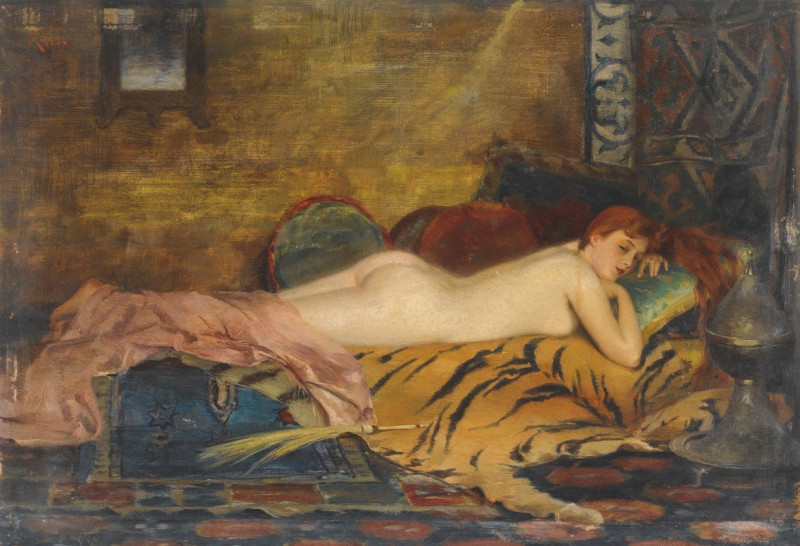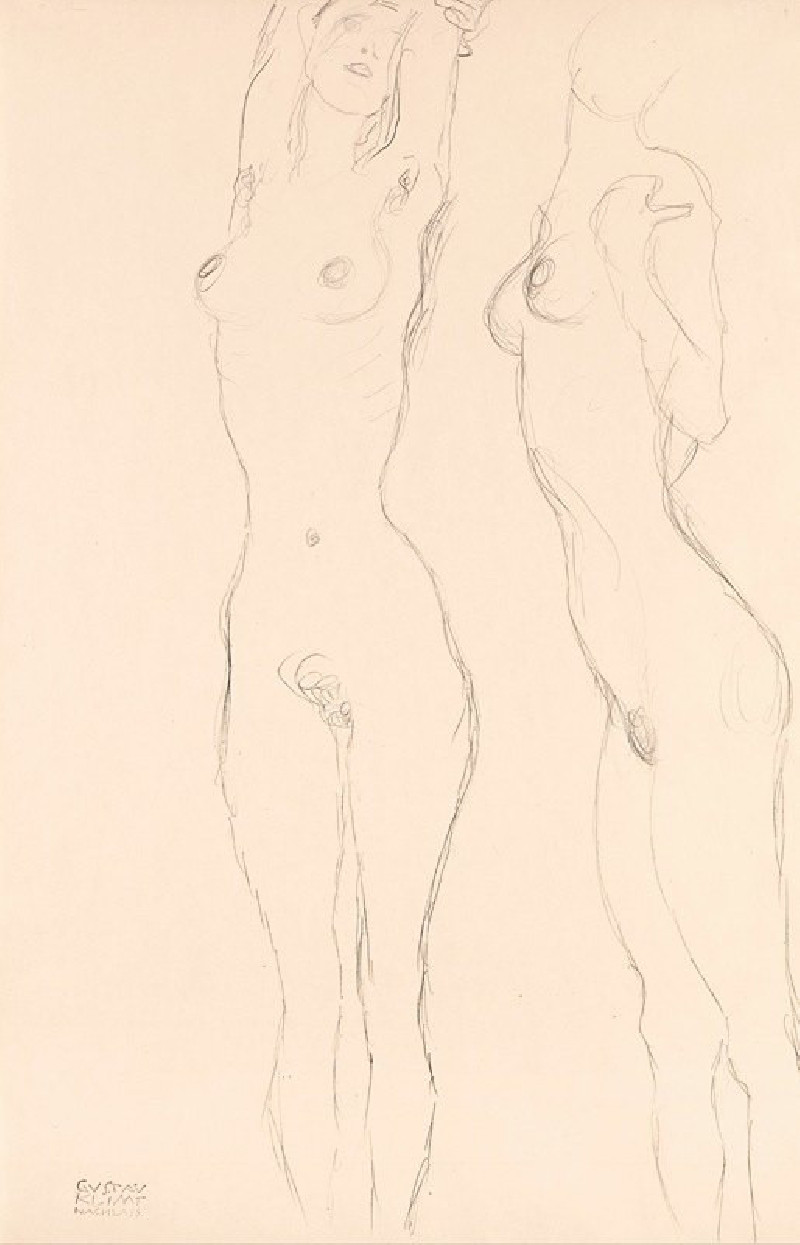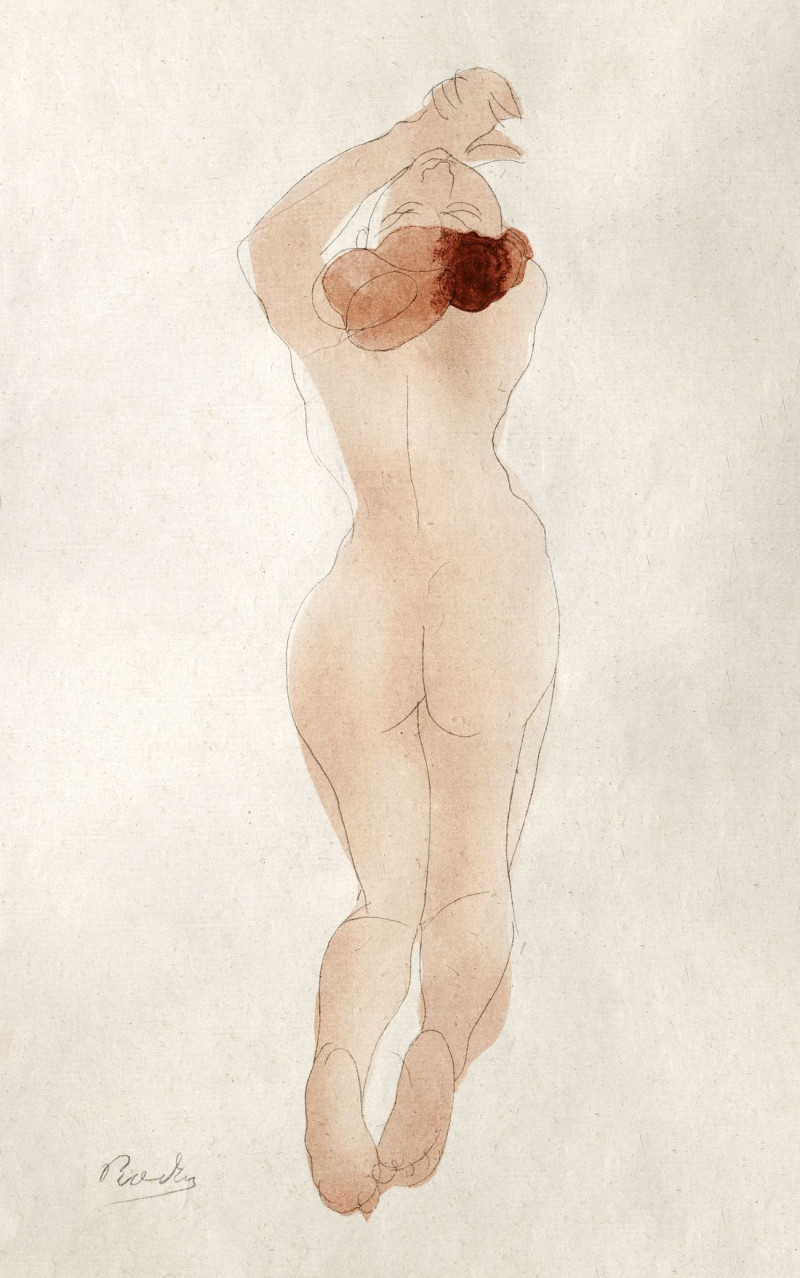Nude on the Beach (1910)
Technique: Giclée quality print
Recommended by our customers
More about this artwork
Ernst Ludwig Kirchner's "Nude on the Beach" from 1910 is an evocative piece that combines elements of expressionism with a distinctive linear technique. The artwork is characterized by swift, loose lines rendered in black on a beige, textured background.This drawing features a nude figure in a relaxed pose, capturing a moment of uninhibited freedom often associated with natural settings like a beach. The figure is sketched with broad, confident strokes, which suggest movement and add a lively dynamic quality to the scene. Kirchner’s use of minimal detail focuses the viewer’s attention on the form and posture of the body, rather than specific facial or anatomical features, highlighting the expressiveness of simplicity."Nude on the Beach" is emblematic of Kirchner’s early explorations into the emotional and expressive potential of line and form. This piece not only reflects the artist’s avant-garde approach to figure painting but also his interest in the human figure’s relationship with nature. The background is suggestive rather than detailed, leaving much to the imagination, and accentuates the solitary presence of the nude figure.
Delivery
Returns
Ernst Ludwig Kirchner (1880–1938) was one of the most important German Expressionist painters. He was a co-founder of Die Brücke, a group of German expressionist artists formed in Dresden in 1905. Die Brücke and Kirchner took inspiration from Vincent Van Gogh and Edvard Munch, as well as African and Oceanic art. They used woodblock printing as a medium to showcase their signature style: flat, unrealistic images with vivid colors. The recurring themes in Kirchner's artworks included exotic cultures, faraway landscapes, self-portraits, dancers and Berlin street life. His paintings and prints effectively portrayed non-European cultures despite the fact that he never traveled outside of Europe.

